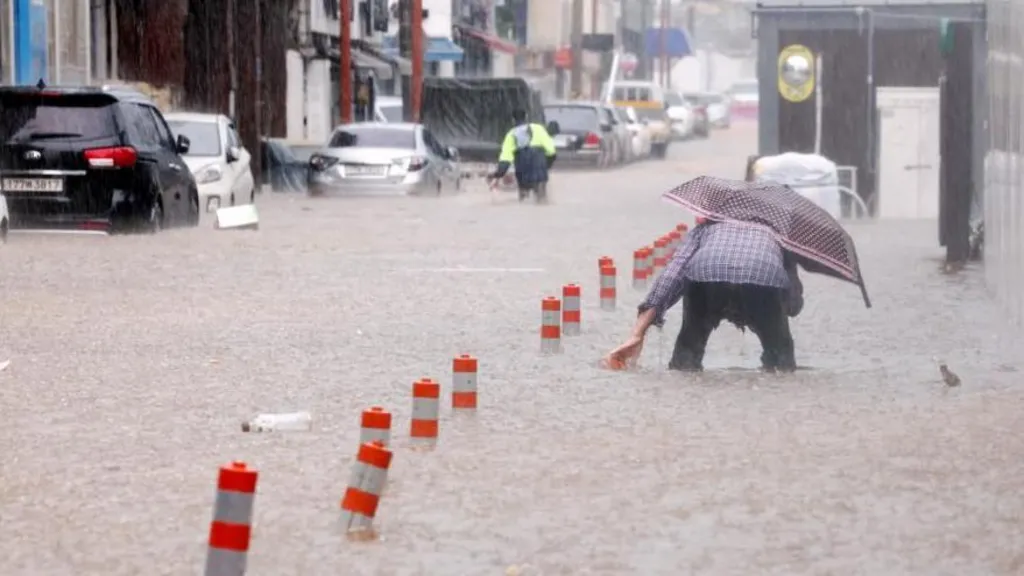South Korea is reeling from one of its most intense monsoon downpours in over a century, leaving at least four people dead and forcing more than 1,300 residents to evacuate their homes.
The heavy rains, which started earlier this week, have hit central and southern regions the hardest. Cities like Osan, Seosan, and Gwangju witnessed rapid flooding, landslides, and collapsed structures as the rainfall exceeded 400 millimeters in some areas within just 24 to 48 hours.
In Osan, tragedy struck when a 10 meter retaining wall gave way, crushing a passing vehicle and killing the driver. Other fatalities occurred in Seosan where a submerged car trapped its occupants, and in separate incidents involving a flooded basement and a swollen stream.
The Korea Meteorological Administration reported that parts of South Chungcheong Province experienced their heaviest rainfall in more than 120 years. Gwangju recorded over 400mm in a single day, causing flash floods that paralyzed traffic and cut off access to some neighborhoods.
Authorities swiftly raised the disaster alert to the highest level and deployed emergency teams to high risk zones. Nearly 50 domestic flights were canceled, and hundreds of rescue workers were dispatched to assist stranded individuals and prevent further casualties.
President Lee Jae Myung addressed the nation, acknowledging the need for better forecasting and infrastructure to withstand future climate extremes. He called for urgent reforms in disaster preparedness and emphasized that such downpours may become more frequent due to climate change.
Weather officials have warned that the worst may not be over. More rainfall is expected through Saturday, particularly in low lying and mountainous regions. Residents have been advised to stay away from riverbanks, underground structures, and any areas prone to landslides.
As South Korea continues to face the wrath of nature, emergency services remain on high alert to prevent further loss of life and property.


